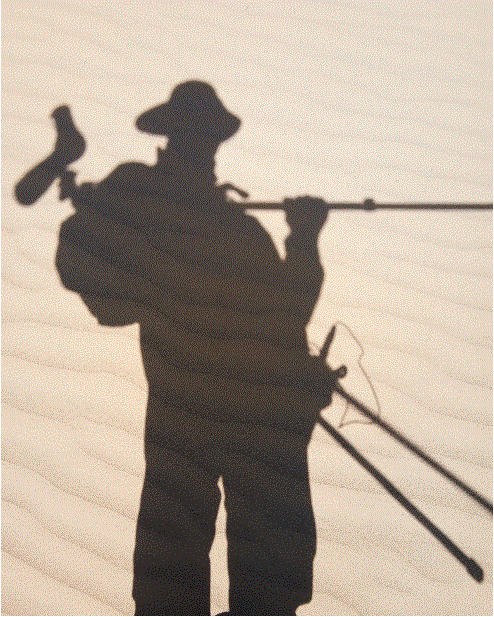top of page

Birds of Ghana 2nd Edition 2022 by Nik Borrow and Ron Demey. Helm Field Guides series. Bloomsbury, London. Soft and Hardcover: 368 pages. ISBN: (hardcover) 9781472994019 (hardcover); 9781472987723 (softcover).
Review by Frank Lambert
Ghana is now a popular birding destination. Its popularity has probably increased because it is a relatively safe country with relatively easy walking where one can see a diversity of Upper Guinea West African endemics, including the alluring Yellow-headed Picathartes. This 2nd edition of the Birds of Ghana will provide further incentive for birders to visit. It has been fully revised and expanded, covering all 773 species recorded in Ghana and the adjacent country of Togo. Whilst the first edition had 145 colour Plates, the second edition has six more. These, all by Nik Borrow, illustrate every species, including all distinct plumages and subspecies. Succinct species accounts by Ron Demey describe key identification features, status, range, habitat and voice, and there are updated distribution maps for each species.

Many of the plates in the first edition had significant amounts of empty space, but this has been noticeably reduced by moving illustrations around and in some cases, increasing the size of individual paintings. Normally this has worked very well, but in the case of Hamerkop, the illustration has increased in size whilst that of other species has not, and it is larger than African Openbill in the 2nd edition, which is not quite right. Both Egyptian and Eurasian Griffin Vultures have been removed from the list, enabling all the true vultures to appear on a single improved plate. Long-legged Buzzard has also been removed, opening space for new illustrations of Red-necked and Common Buzzards in flight from above.
Nik Borrow made improvements individual illustrations on 81 of the original plates as well as painting additional species that have been added to the Ghana bird list since the 1st edition. Improved paintings and plates include those of egrets, female Garganey, Nkulengu Rail, godwits, phalaropes, gulls, larger owls, Forest Robin, Grey Ground Thrush, Phylloscopus warblers, Tawny-flanked Prinia, Ussher’s Flycatcher, Puvel’s Illadopsis, and Sulphur-breasted Bush-shrike.

There are also many completely new illustrations, such as juvenile Little Grebe, immature African Fish Eagle, immature Bat Hawk in flight, Red-necked Buzzard in flight from above, the white-headed morph of Ayres Hawk Eagle in flight, two new illustrations of tinnunculus Common Kestrel (which will help with differentiation from Lesser Kestrel), immature Lesser Moorhen, juvenile Lesser Honeyguide, additional races of Red-billed Helmet-shrike and Spotted Flycatcher (balearica) and an adult Aquatic Warbler (only the juvenile was included in the 1st edition): the book has been very extensively overhauled.

The plates also feature a few additional line drawings: the nests of Rufous-chested and Preuss’s Cliff Swallow, Yellow-headed Picathartes, a penduline tit, and White-billed Buffalo Weaver. Overall, these substantial improvements are excellent and the only plate I noticed that perhaps could have been improved is that of the larks which could perhaps have benefitted with additional illustrations. A painting of immature Tawny Pipit would also have been useful: it is more different to the adult than the text seems to suggest.
Some changes in taxonomy did not require new artwork. These include, for example, Blue-moustached Bee-eater M. mentalis (Blue-headed Bee-eater Merops muelleri in the 1st edition), West African Wattle-eye (previously part of Chestnut Wattle-eye) Lowland Sooty Boubou (previously Sooty Boubou), West African Seedeater (Streaky-headed in the 1st edition) and Gosling’s Bunting (split from Cinnamon-breasted Rock Bunting).

The other significant change between editions is the provision of fully updated maps. These were also done by Nik Borrow and were based on the outstanding contribution to our knowledge of bird distribution in Ghana by Francois Dowsett-Lemaire and Bob Dowsett (2014). Comparing the maps in the two editions, there are hundreds of changes.

There are a few name changes, such as Eurasian instead of Common Teal, Lesser Black-winged to Senegal Lapwing, but most remain consistent between editions. The taxonomy is based on IOC (2020), so is up to date. I noticed that this book has Western Cattle Egret is included as Cattle Egret (now split by IOC) and I suspect there are a few more examples of differences.
Although this book treats the pittas occurring in Ghana as African Pitta, the taxon that occurs here, pulih (illustrated here with a photo taken by Nik Borrow, originally identified as a hybrid between African and Green-breasted Pitta) is likely misclassified, and should be treated as a subspecies of Green-breasted Pitta (N. Borrow and C. Gooddie in litt.).

The introductory pages remain very similar to those of the first edition, and both editions contain a comprehensive checklist of the Birds of Ghana (and Togo). The text for the species accounts has of course changed but remains mostly as in the first edition. Where there is increased knowledge of voice, this has been updated in the 2nd Edition. As in the first edition, the text is concise, so the guide has only increased by 14 pages, and still fits easily into a small bag.
For anyone birding in Ghana, the second edition of this book is certainly the book to take. It is an excellent field guide, and even if you already own the 1st edition, it is certainly worth acquiring this updated 2nd edition. Before going, it is also worth looking at Ntiamoa-Baidu et al. (2001), which can be accessed online via the BirdLife International Datazone.

References
Dowsett-Lemaire, F. and Dowsett, R.J. (2014). The Birds of Ghana: An Atlas and Handbook. Tauraco Press, Liège.
Ntiamoa-Baidu, Y., Owusu, E.H., Daramani D. T., and Nuoh, A. A. (2001) Ghana In Fishpool, L.D.C. and Evans, M. I. (eds) (2001) Important Bird Areas of Africa and associated islands: priority sites for conservation. Newbury/Cambridge, UK: Pisces Publications/BirdLife International.
bottom of page

